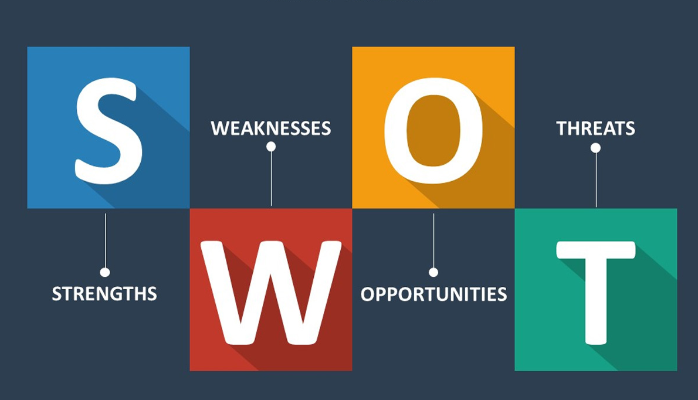Letting your business run freely without checks could be detrimental to business growth. There should be a way of assessing your organization’s performance. You should be able to create a SWOT analysis when starting your business and update it annually.
Read more about Business
The information gathered from a thoroughly conducted SWOT analysis would help you address your weaknesses, capitalize on your strengths, find opportunities, react to threats and break into a new or existing market.
You must be wondering what exactly SWOT analysis is. SWOT analysis is a strategic business analysis used to examine a business from the multiple perspectives of its Strengths, Weaknesses, Opportunities, and Threats. Through this analysis, business owners can look internally to identify strengths and uncover weaknesses and externally analyze the business environment to seek out opportunities and possible threats which might exist. With this strategy, you’ll be able to achieve your goals, gain a competitive position and push business growth. Your SWOT analysis should be short, simple, and realistic.
Follow closely, let’s uncover the secrets to conducting an effective SWOT analysis.
State Your Intentions
For every SWOT-analysis carried out, there should be a goal somewhere which you want to achieve. SWOT analysis should be carried out purposefully with a goal/objective in mind. Don’t go conducting a SWOT analysis out of the blue without any clear-cut objective, because it would be a clear waste of time and resources. For instance, you could undertake a SWOT analysis to find out the reasons behind customers’ poor response to sales or to prepare grounds for the launch of a new product line. Whichever be the case, always ensure you have a clear focus.
Dig Deep
Having stated your intentions and the objectives you seek; you have to go into research. Bury your nose deep into digging out facts and information concerning your business, industry, and target market. Conduct surveys from customers regarding the subject you are seeking answers to, talk to employees, shareholders, and clients. Get a holistic view of what’s obtainable in the market and what your competitors are doing.
Sign up to the Connect Nigeria daily newsletter
When you are done with these 2 steps above, you create a SWOT analysis matrix which is a quadrant containing the points listed below:
- Pinpoint your area of strength – Your business strength refers to those areas where you have a comparative advantage over your competition and which opens you up to attracting new customers. These strengths are positive and internally embedded into your business. Don’t think too far, business strengths are wrapped up in the value you provide to customers. They are those areas which customers love about you. These strengths could be a high-quality product, unique customer services, highly trained staff, unique value proposition, etc. To find out these strengths, you could ask some questions like: what makes my brand unique? what makes it better than the competition etc.
- Uncover your weaknesses – These are areas that are detrimental to business growth and should be improved upon. No business stands on perfection and that is why updating your SWOT analysis opens your eyes to areas where you are getting something wrong. Without this, you may become beclouded by the successes you record till the point where those weaknesses would explode in your face. List out things that may be capable of wedging business growth and tackle them. They could be a lack of resources, poor brand positioning, ineffective systems, or any other thing.
- Discover potential opportunities – There are potential opportunities everywhere, all you need to do is look closely. No matter how crowded the market is, there are still strings of opportunities to pull at. At this stage, you look outside your organization to find out external factors capable of boosting your business. When you discover and exploit these factors, you’ll be able to increase sales, net profit, market shares and create greater value. Opportunities lie in partnerships, change of government, new technologies, etc.
- Pinpoint business threats – Threats are external factors capable of putting the business at risk. Threats can be very harmful to businesses and although they are external factors beyond control, identifying them will help you prepare better against them. Threats could be new competitors, negative press, unfavorable climate changes, etc.
After this SWOT matrix is written out in separate columns, take action. When you have gotten a detailed description of your organization’s strengths, weaknesses, and looked at opportunities and possible threats, display them side by side to get a holistic picture of the progress of your business. Then draft a strategy aligning with your business goals, exploiting opportunities discovered, and dealing with possible threats and weaknesses. Think of how to exploit your strengths to eliminate threats and open doors of opportunities.
Featured Image Souce: Medium
Got a suggestion? Contact us: [email protected]


